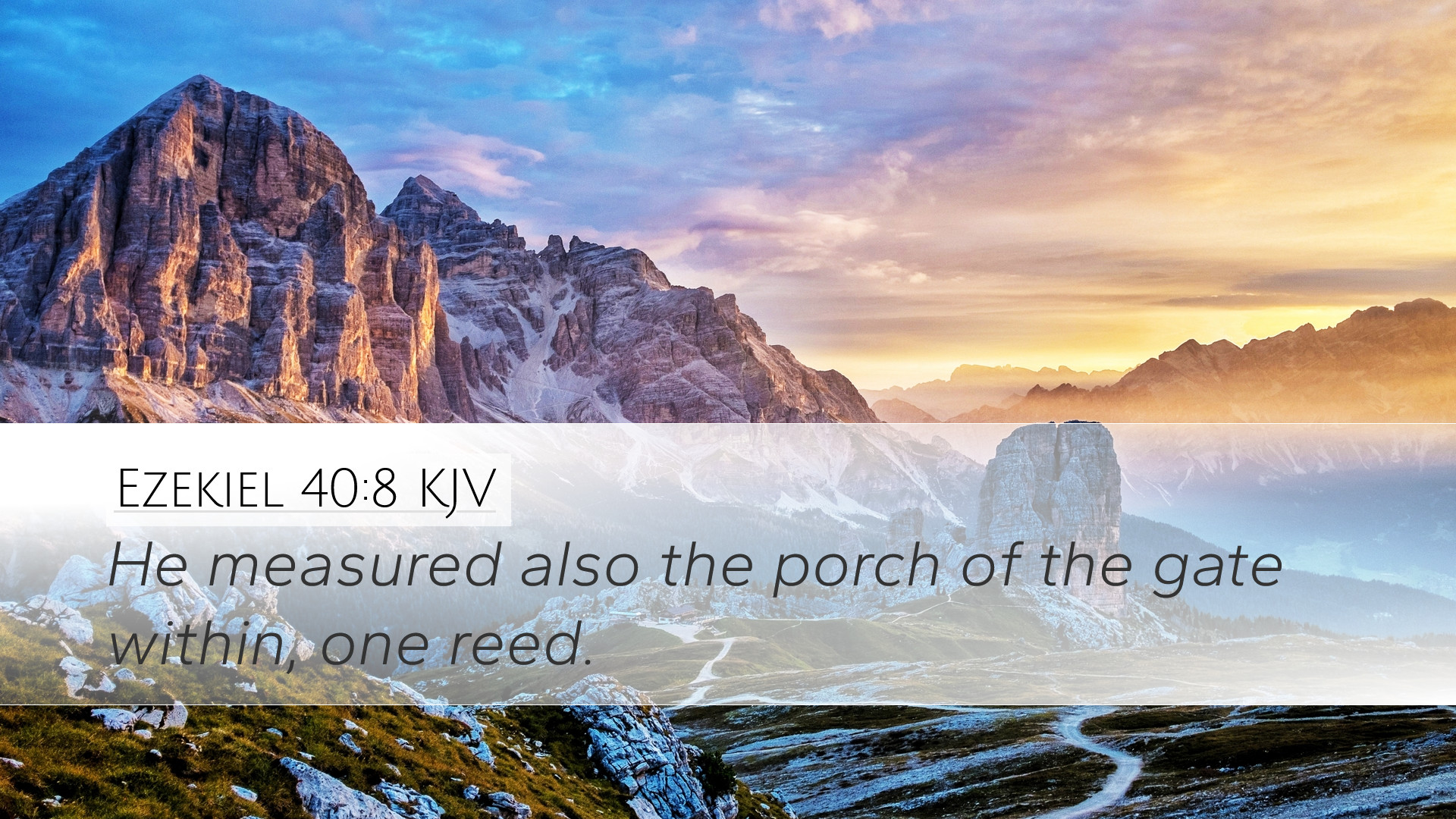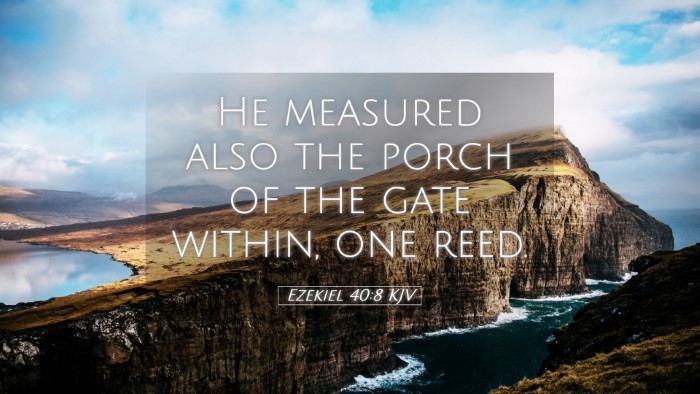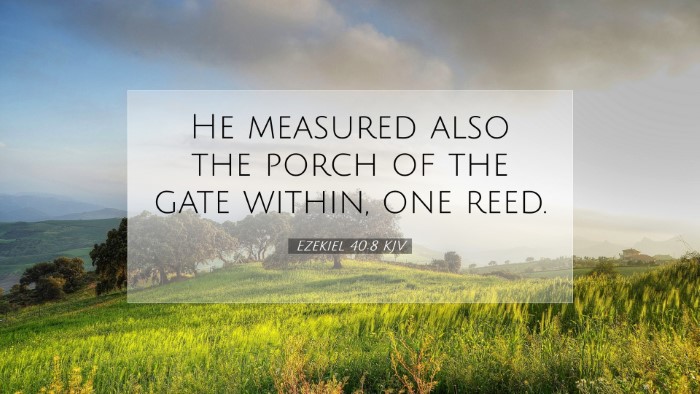Ezekiel 40:8 Commentary
Bible Verse: Ezekiel 40:8 - "He measured the entry of the gateway on the side of the gate that looks toward the east, and he measured the gateway; it was eight cubits deep and its posts were two cubits thick; and the entry of the gateway faced the temple."
Introduction
The passage in Ezekiel 40:8 is part of a detailed vision given to the prophet Ezekiel regarding the future temple and its surrounding structures. This vision is significant in terms of its theological implications, its architectural details, and its prophetic nature concerning the restoration of Israel.
Contextual Overview
Ezekiel's vision occurs during a period of exile for the Israelites. The meticulous details found in this chapter symbolize restoration, order, and divine purpose. Ezekiel is often considered a figure of hope for the Israelites; the instructions regarding the temple are symbolic of God's presence returning to His people.
Commentary Insights
Matthew Henry's Commentary
Matthew Henry emphasizes the importance of the measurements and structures outlined in this vision. He notes: "The measures of the temple signify the knowledge of God’s order, holiness, and majesty." Henry draws parallels between the physical structure of the temple and the spiritual state of the people, reminding us that how we approach God should reflect His holiness. The eastward orientation of the gateway signifies the direction from which God’s glory comes, indicating His presence and favor toward His people.
Albert Barnes' Commentary
Albert Barnes provides a detailed analysis of the measurements stated in the verse. He points out that the dimensions of "eight cubits deep" and "two cubits thick" denote a significant entrance that is both secure and grand. The depth of the gateway can symbolize the depth of relationship required in approaching God. Barnes stresses that these measurements are not mere architectural details but carry substantial meaning about access to the Divine and the importance of reverence in worship.
Adam Clarke's Commentary
Adam Clarke interjects a more symbolic interpretation, observing that the temple and its design reflect the order and discipline required in worship. Clarke interprets the "gateway" not just as a physical entrance but as a spiritual one, suggesting that Christ Himself embodies the way to the Father. He writes, "As the gate leads into the holy place, so Christ is the gateway to divine communion." The emphasis on the 'posts' can represent strength and stability, reflecting the ongoing covenant between God and His people.
Theological Implications
The description of the gateway has profound theological implications. It calls for a serious examination of how believers approach worship and the importance of understanding God’s holiness. The eastward orientation serves as a reminder that God invites us to enter His presence, while also challenging us to enter with reverence. The measurements may reveal that God is a God of order, who values structure and intentionality in the relationships He fosters with His people.
Practical Applications for Today
- Intentional Worship: Just as the physical temple required attention to detail, our worship practices should be intentional and reflect a deep understanding of God's nature.
- God’s Holiness: Recognizing the holiness of God encourages believers to approach Him with awe, where reverence is paramount in personal and corporate worship settings.
- Access to God: The gateway symbolizes the access believers have through Jesus Christ. This connection should inspire gratitude and a sense of responsibility in how we live and worship.
Conclusion
In Ezekiel 40:8, the details surrounding the gateway serve as both a reminder of God’s transcendent holiness and His immanent desire to dwell among His people. Pastors, students, and theologians are encouraged to explore these dimensions of meaning in their works, teaching, and personal devotions. As we reflect on this passage, let us remember the importance of preparing our hearts to enter into communion with the Almighty God, who invites us in through Christ.


